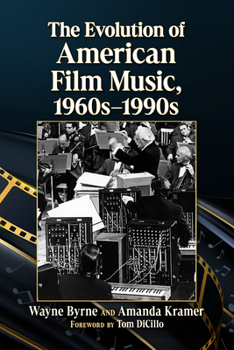The Evolution of American Film Music, 1960s-1990s
The New Wave of American cinema emerged in the 1960s amid seismic social, cultural, and political shifts. Where the films of the Silent era and the Golden Age had relied on classical music compositions to score their narratives, the emergence of the New Hollywood movement introduced a reliance on popular music. This blending of film and commercial music, accompanied by instrumental innovations like the synthesizer, fundamentally reshaped the soundscape of cinema and reflected broader cultural and industrial change.
This book traces the evolution of film music from the 1960s through the 1980s, examining its development from aesthetic, industrial, and technological perspectives. It highlights pivotal moments such as the incorporation of jazz scores, the rise and fall of New Hollywood, the emergence of the Blaxploitation genre, the MTV era, and the underground No Wave movement in late-1970s New York. Drawing on conversations with composers, sound designers, and industry executives, this study offers rare insights into the creative processes and industry dynamics that transformed the relationship between music, culture, and American film.





